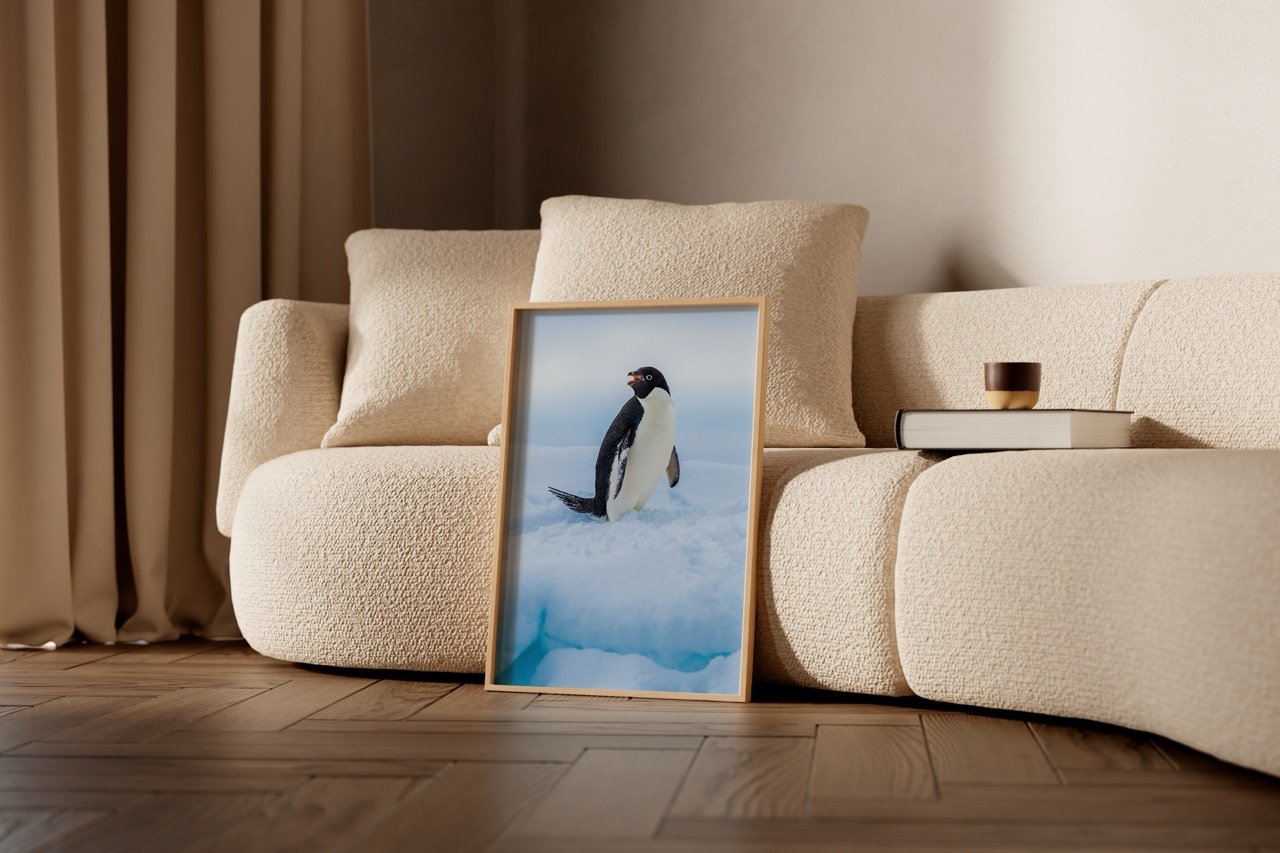Adelie penguin
The Adelie penguin is the second penguin species to nest on the Antarctic mainland. This photo is from the Cape Adare colony, where nearly 900,000 penguins gather during the breeding season. Typically, two chicks are born
The Adelie penguin (Pygoscelis adeliae) is one of the two penguin species, along with the emperor penguin, that nests on the Antarctic mainland, though not on the ice itself. The Adélie penguin is often considered the most amusing of all penguin species. Its most distinctive feature is the white ring around its eye. Weighing less than five kilograms and standing about 70 centimeters tall, the species is classified as Least Concern. There are an estimated 2.5 million breeding pairs worldwide.
The Adelie penguin is the second penguin species to nest on the Antarctic mainland. This photo is from the Cape Adare colony, where nearly 900,000 penguins gather during the breeding season. Typically, two chicks are born
The Adelie penguin (Pygoscelis adeliae) is one of the two penguin species, along with the emperor penguin, that nests on the Antarctic mainland, though not on the ice itself. The Adélie penguin is often considered the most amusing of all penguin species. Its most distinctive feature is the white ring around its eye. Weighing less than five kilograms and standing about 70 centimeters tall, the species is classified as Least Concern. There are an estimated 2.5 million breeding pairs worldwide.
The Adelie penguin is the second penguin species to nest on the Antarctic mainland. This photo is from the Cape Adare colony, where nearly 900,000 penguins gather during the breeding season. Typically, two chicks are born
The Adelie penguin (Pygoscelis adeliae) is one of the two penguin species, along with the emperor penguin, that nests on the Antarctic mainland, though not on the ice itself. The Adélie penguin is often considered the most amusing of all penguin species. Its most distinctive feature is the white ring around its eye. Weighing less than five kilograms and standing about 70 centimeters tall, the species is classified as Least Concern. There are an estimated 2.5 million breeding pairs worldwide.
Paper Used for Prints
Hahnemuhle Fineart - Natural Line Hemp
290 gsm • 60% hemp fiber • 40% cotton • white
Hahnemühle Hemp paper is made of 60% hemp and 40% cotton fibers. It has a smooth surface and a neutral white color
Frame Options
Wood Veneer Frame
A genuine wood veneer on the frame’s surface gives a modern, lightweight, and durable artwork the appearance and feel of a traditional wooden frame. The same paper used for the prints is applied to the frame, and there is no glass or other covering.
Available in oak, dark brown wenge, and black (white is not available)
A white border surrounds the printed image area. The actual frame sizes are 25x35 cm, 45x65 cm, 70x100 cm, and 80x115 cm
Silisec Acrylic Print
Silisec® acrylic prints represent the absolute elite of exhibition products. This museum-approved priming method is unique in that it completely eliminates the paper’s surface texture. The photographic print is primed with a special silicone and finished with a glossy acrylic surface.
Note: All prints come with a ready-to-hang mechanism and are delivered with a certificate of authenticity signed by the photographer.






